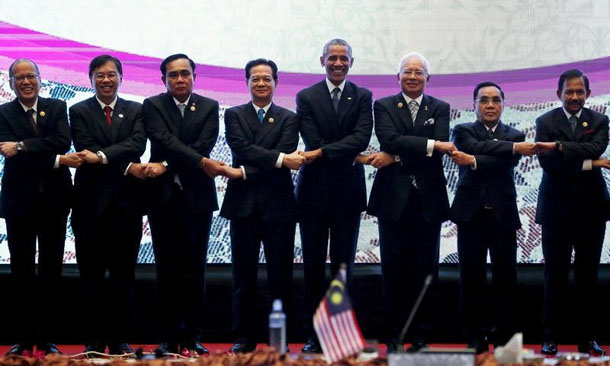RANGOON — Fueled by lower domestic yields and fierce Chinese demand, Burma’s rice market has found itself on shaky ground, with local prices among the highest in the region, rice industry sources said.
Rice is Burma’s major export item, but widespread flooding in July and August, as well as increasing crop prices, has weakened the commodity’s trading power.
Lu Maw Myint Maung, executive director of Shwe Wah Yaung Agriculture Production Co., based in Rangoon, said, “One ton of 5-percent broken grain rice goes for around US$400 in Burma. But in Thai and Vietnamese markets, the price is just around $350.”
“There is a gap of about $50,” he said.
Myint Cho, director of the Ministry of Commerce, said that as China’s demand for rice shipments across the border was growing each year, rice exporters were increasing targeting the neighboring market.
“Exporting rice [to China] is legal here [in Burma], but importing rice [from Burma] is illegal in China, meaning that there are no taxes and that China can offer higher prices,” he said.
Although China officially banned rice imports from Burma in 2014, in lieu of assurances that most rice be milled and meet certain quality standards, the rice trade across the Sino-Burmese border accounts for a majority of Burma’s total rice exports. Chinese importers have reportedly offered to pay $460 per ton of rice for land shipments but only $330 to $350 per ton for seaborne rice imports.
“It’s clear that merchants will want to export to China by land,” Myint Cho said.
The record high price in Burma’s domestic market has prompted some regional rice merchants to propose exporting rice to Burma, said Ye Min Aung, secretary of the Myanmar Rice Federation (MRF).
“A group from Thailand came and met with the Federation. They said that they want to sell rice to us because Burma has the highest price for rice in the international market. There are also other groups that have proposed selling rice to us when the AEC [ASEAN Economic Community] comes into operation next year,” he said.
Another factor that has contributed to the mounting price of rice in Burma is the ongoing depreciation of the kyat. Currently, the local currency is at 1,300 kyat against the dollar.
Rice exporters added that there has also been an uptick in the price of key agricultural imports. Certain benefits are therefore lost on farmers, who have to absorb these additional price hikes.
“As the prices of fertilizers and pesticides have increased due to dollar appreciation, production costs have also increased,” said Ye Min Aung.
On top of this, many farmers have to pay back loans—many of which range in price from 550,000 to 600,000 kyat—that they took out from the Ministry of Cooperatives to purchase farming machinery. This “hire purchase system” racks up a steep debt for many farmers.
For the 2014-15 fiscal year, Burma exported approximately 1.8 million tons of rice—a record export volume. Of this, 1.3 million tons of rice went to China.

















